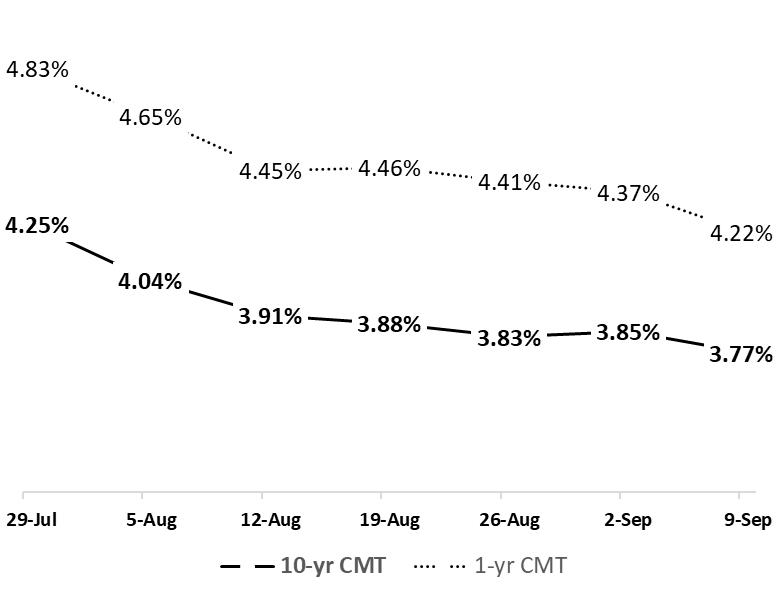In the August rate update, I explained why over 99% of Home Equity Conversion Mortgages (HECMs) are variable interest rate loans and the advantages of this over the fixed-rate counterpart. Some of those advantages improve over time, like the organic line-of-credit growth. So, would it make sense to apply right away, even though rates may decline in the future?
According to conventional wisdom, homeowners should hold off on getting a reverse mortgage until they need it or until interest rates decrease. To the novice, this may appear to be the right choice. After all, older ages and lower interest rates generally yield higher principal limits. However, the costs will typically outweigh the benefits of waiting.
The costs and risks of waiting
Using a reverse mortgage as a “last resort” is generally not optimal. Published research in the Journal of Financial Planning has demonstrated this. The reverse mortgage, obtained as early as possible, creates more efficiencies in retirement. They have the potential to increase cash flow and liquidity, reduce tax liability, and, in some cases, increase net worth.
While we cannot go into detail on the financial planning advantages, consider these basic costs and risks of waiting:
- Lost compounded LOC growth
Time is on the side of homeowners who get a reverse mortgage as early as possible. The unused principal will grow in the borrower’s favor at current interest rates plus 0.50%. - Lost cash flow opportunities
Cash flow immediately improves when paying off a traditional mortgage with a reverse mortgage because the reverse mortgage requires no monthly principal and interest mortgage payment. - Regulatory risk
Reverse mortgage regulations and guidelines change periodically. While some changes may be advantageous, others have created additional challenges. - Qualification risk
There is no guarantee one will qualify for a reverse mortgage when needed. Many homeowners have found out the hard way: it’s better to have a LOC and not need it than to need it and not have it. - Valuation risk
For some markets, waiting may reduce principal limits if property values decline. Obtaining a reverse mortgage early locks in today’s value for calculating initial principal limits.
September 2024 update
The 10-year Constant Maturity Treasury (CMT) weekly average — used for calculating HECM expected rates — has decreased 48 basis points since the beginning of August. The new average (3.77%) is added to the lender margin, and the resulting expected rate is effective for new HECM applications from Sept. 10 to Sept. 16.

This represents the lowest index rates we’ve seen since June of 2023. Also note we’ve seen a narrowing of the spread between the 10-year and 1-year CMT averages (-0.45%).
Graphics by Dan Hultquist. This column does not necessarily reflect the opinion of HousingWire’s Reverse Mortgage Daily and its owners.
To contact the author of this story: Dan Hultquist at dan@understandingreverse.com
To contact the editor responsible for this story: Chris Clow at chris@hwmedia.com







This fiscal year has been horrible for the industry as to HECM endorsements. Yet interest rates keep falling. The first quarter of fiscal 2025 may be worse for HECM endorsements than the same period last fiscal year.
One would hope to see interest rates fall further. Yet the best fiscal year for both total HECM endorsements since September 30, 2011 and HECM Refis (H to H) EVER is fiscal year 2022. But that fiscal year also had the worst net present value for future cash flows at over $800 million as of 9/30/2023 of all the HECM endorsed cohorts in the MMIF. HUD most likely will not stand still if fiscal 2025 has a similar result.
It is surprising that the data that could help make the case for higher PLFs just sits. What is that data has yet to be identified by the industry. Yet it is clearly indicated in both HUD’s annual report to Congress on the financial condition of the MMIF and the Annual Review of the HECM portion of the MMIF by HUD’s independent actuaries.
Few seem interested enough in the reports to do a thorough analysis. What will come of this is anyone’s guess.